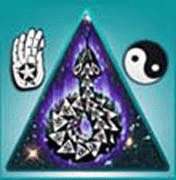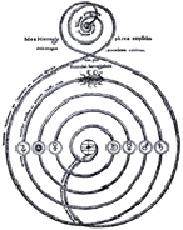To be sure, the field of surgery is much less likely than that of internal medicine to be contaminated by irrational ideas, for in most surgical cases dealt with by ancient physicians the cause of the injury was too obvious to require the insertion of magical antecedents. On the contrary, an internal disease is always mysterious and likely to breed superstitious ideas in the patient’s mind, even in the physician’s mind.
The Smith papyrus consists not of recipes but of definite cases. It was planned to deal with the ailments in the order of the bodily parts from head to foot, but unfortunately it stops a little below the shoulders, whether because the scribe was interrupted or because the end of the manuscript got 1ost. That order – eis podas ec cephales, a capite ad calces -remained the one throughout the Middle Ages, but it was so natural, as a first approximation, that we should not assume it was determined by the Egyptian example.
The forty-eight cases dealt with in the papyrus, as it has come to us, are classified as follows:
The discussion begins with the head and skull, proceeding thence downward by way of the nose, face and ears, to the neck, clavicle, humerus, thorax, shoulders and spinal column, where the text is discontinued, leaving the document incomplete. Without any external indication of the arrangement of the text, the content of the treatise is nevertheless carefully disposed in groups of cases, each group being concerned with a certain region.
There is no reason to believe that the ancient Egyptians had studied anatomy, by means of deliberate dissections, but they had taken advantage of the accidental experiments falling under their eyes and had accumulated much knowledge. Of course, the mummification of dead bodies of men and animals, which had been practiced from time immemorial, might have taught them many things, but I am rather skeptical about that; the embalmers were too much concerned about their own difficult art to pay attention to irrelevant anatomic details. lt is possible that the practice of mummification made it easier later, much later, in Ptolemaic times, for Greek scientists to undertake systematic dissections, but that is another story. As far as ancient Egypt is concerned there is no evidence of the influence of mummification on anatomic knowledge.
The author whose work is recorded in the Smith papyrus had meditated on anatomic and physiologic questions. He was aware of the importance of the pulse, and of a connection between pulse and heart. He had some vague idea of a cardiac system, though not of course of a circulation, which nobody clearly understood before Harvey (and before him the Muslim physiacin Ibn Al-Nafis). His knowledge of the vascular system was made hopelessly difficult by his inability to distinguish between blood vessels, tendons, and nerves.

Ancient Egyptian Alchemy

Al=God – Khem=Egypt
Ancient Egyptians were into all kinds of magic and astrology. They considered alchemy a science, perhaps the science of immortality eternal life. Alchemy as a transition metal – both physical and metaphysical would take many turns in the millennia that would follow. Transition metals – turning base metals into gold – and alchemy of consciousness moving from physical reality to that of higher frequency.
The roots of alchemy date back to an ancient Egypt document called The Emerald Tablet of Thoth. In Greece Thoth was Hermes the Magician – Hermes Trismegistus which is thought to be the foundation of alchemy. Thoth stated, ‘As is Above, So is Below’, the duality of our experience in third dimension.
Thoth was considered part of the Zep Tepi the creation gods who came here as a Giant or God – and lived befre recorded hostory and the pyramids. The famous Emerald Tablet (Tabula Smaragdina) of Hermes is the primary document of alchemy. There have been various stories of the origin of the tract, one being that the original emerald slab upon which the precepts were said to be inscribed in Phoenician characters was discovered in the tomb of Hermes by Alexander the Great.
Alchemy in ancient Egypt was about Magic – Magicians – Priests. Thoth and Hermes who was Merlin and later Zoroaster [Magi] – the magicians – who created a reality based on electromagnetic energies – duality – polarity – magnets – magic – mathematical patterns that repeat in the spiraling concept of time.

Egyptian Heiroglyph
Following Sacred Geometry
You spiral down and around slowly –
Hit Zero Point – Then Poof!
You spiral back to creation quickly!
In alchemy we separate the gold from the slag. The metal is placed in a crucible where it is heated with fire. Fire are the experiences of the Earth plane – the emotional body. One has only to transmute the fire – to move into conscious awarenes where creation begins and ends and all answers reside beyond the alchemy of time and space.
